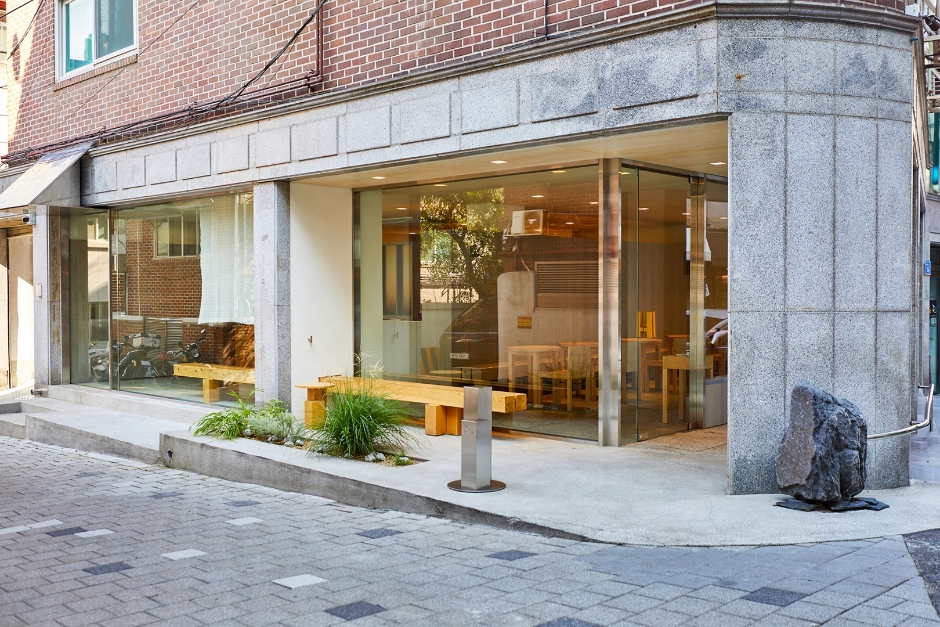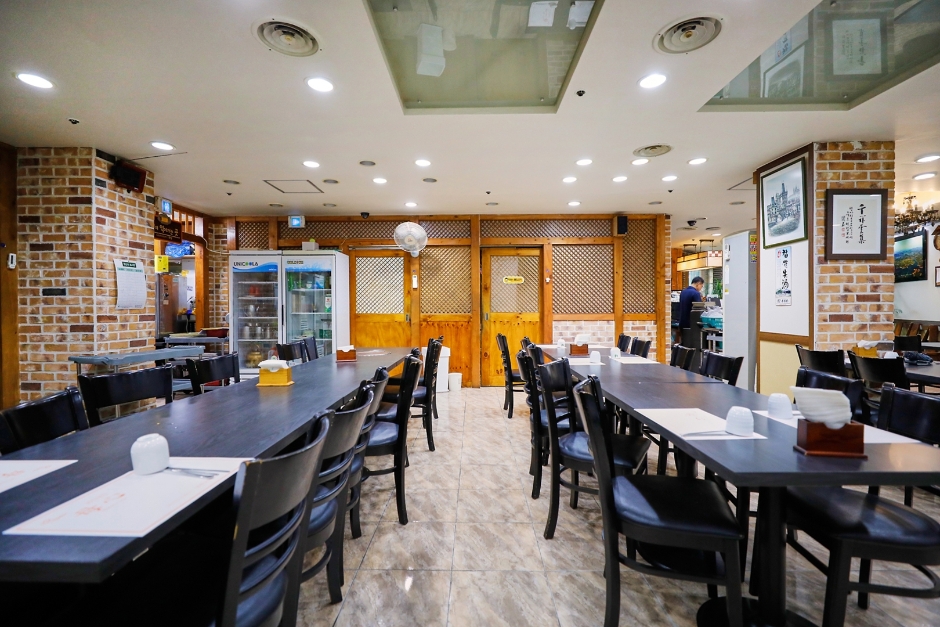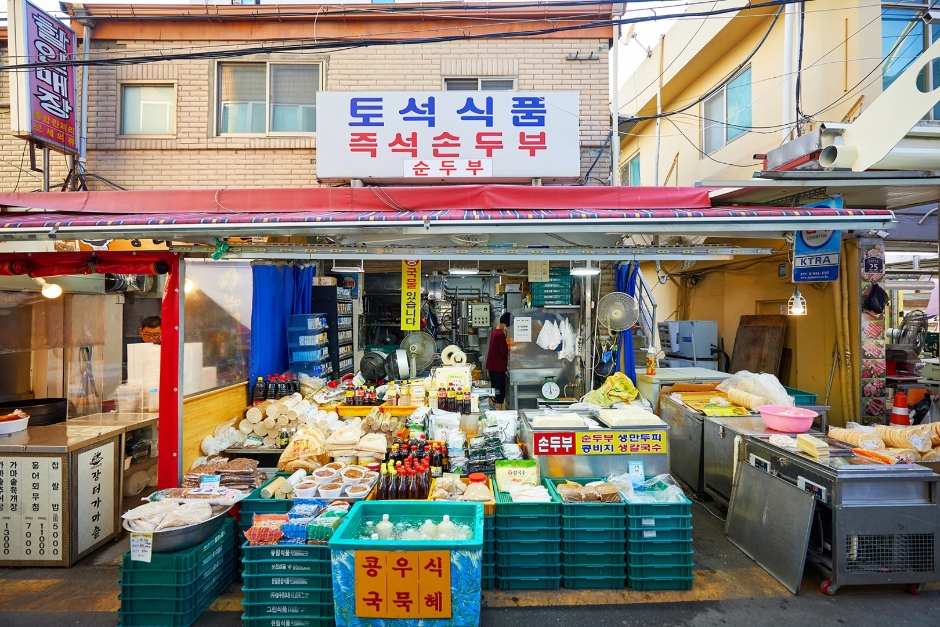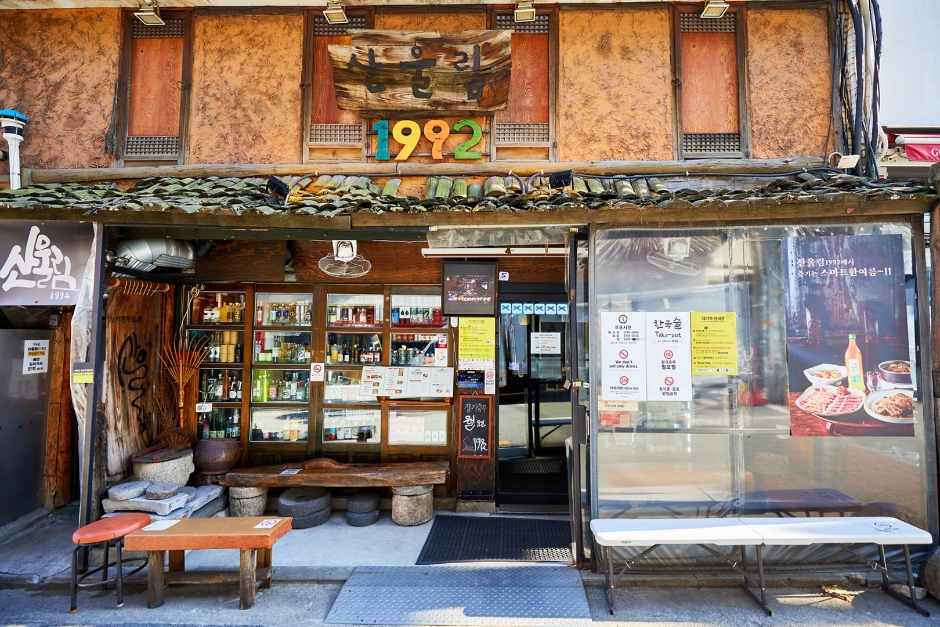Roem - NC Bulgwang Branch [Tax Refund Shop] (로엠 NC불광)
4.9Km 2024-07-01
20, Bulgwang-ro, Eunpyeong-gu, Seoul
-
Aeum (에움)
5.0Km 2024-03-26
36 Seogang-ro 11-gil, Mapo-gu, Seoul
Aeum is a fusion and traditional dessert cafe in a quiet alley between Sogang University and Hongik University in Seoul. Wooden interiors with muted colors create a neat atmosphere, and there are no signboards or menus on the outside or inside, so visitors can enjoy drinks and desserts in a quiet and relaxing setting. Coffee drinks, including pour-over coffee, are available, and there are many desserts as it's a traditional dessert cafe. The cafe also created a new dessert menu to cater to today's tastes after launching a pop-up store.
Raised rice cake, a traditional Korean dessert, and shaved ice are especially famous. The raised rice cake comes in cherry pepper, sesame, matcha, and chestnut flavors. The shaved ice comes as sweet red bean, apple cinnamon, dried persimmon, and sorbet flavors. Recipes and plating are designed to make Korean desserts easy for modern people to enjoy.
Mosim (모심)
5.0Km 2025-05-20
8 Gaeunsa-gil, Seongbuk-gu, Seoul
Mosim is a Korean table d’hote restaurant that offers a variety of menus to choose from depending on the kind of dishes and the number of side dishes. The set menu, which includes main dishes, such as hwangtae gui (grilled dried pollack) and galbitang (galbi soup), and side dishes, such as salad, japchae, and seasoned vegetables, is plentiful in amount and variety enough to fill the table. There are menu items that can be enjoyed individually, such as samgyetang, bibimbap, and yukgaejang (spicy beef soup). The restaurant’s menu comprises nutritious dishes that soothe one's tired mind and body. The restaurant has private rooms that can accommodate 4, 8, 12, 16, 20, 24, and 30 people, so it is a good option for guests seeking a quiet meal with the family or group gatherings.
Ceramic Cafe JOOL(도자기카페 줄)
5.0Km 2025-11-05
11, Sinchon-ro 4-gil, Mapo-gu, Seoul
'24/365 with BLACKPINK' filming location
This is the studio where JISOO and ROSÉ visited and made pottery in BLACKPINK's exclusive reality content '24/365 with BLACKPINK'. Through the one-day class, you can draw a picture on a mug or make your own pottery by hand. If you follow the teacher's class and pay attention, you will feel great fun even if you are clumsy. Just touching the moist clay dough has the effect of relieving daily stress. Classes require reservations.
LG Best Shop - Bulgwang Main Branch [Tax Refund Shop] (엘지베스트샵 불광 본점)
5.0Km 2024-04-18
41, Bulgwang-ro, Eunpyeong-gu, Seoul
-
Olive Young - Hwanghak Sageori Branch [Tax Refund Shop] (올리브영 황학사거리)
5.0Km 2024-04-17
410, Wangsimni-ro, Seongdong-gu, Seoul
-
Eyedentity - Anam Branch [Tax Refund Shop] (아이덴티티 안암)
5.0Km 2024-04-18
1F, 92-1, Goryeodae-ro, Seongbuk-gu, Seoul
-
Daerim Market (대림시장)
5.0Km 2024-03-15
300-10 Eungam-dong, Eunpyeong-gu, Seoul
The oldest traditional market in Eunpyeong-gu, Seoul, is also the capital’s only fifth-day market (held on 5th, 10th, 15th, 20th, 25th, and 30th of the month). It is divided into indoor and outdoor spaces. The former offers a comfortable space for shopping regardless of the weather. Like any good traditional market, Daerim Market offers vegetables, fruits, meat products, seafood, grain, and clothing at affordable prices. Visitors are recommneded to visit the restaurants hidden throughout the market, such as Halmaejip, a 50-year-old restaurant serving excellent banquet noodles, japchae, and tteokbokki; and Wooyirak, which serves pancakes with cream makgeolli (unrefined rice wine). Because the food is affordable and delicious, the market sees a lot of visitors throughout the day.
Sanullim 1992 (산울림1992)
5.0Km 2024-03-15
60 Seogang-ro 9-gil, Mapo-gu, Seoul
This Korean bar and restaurant serves Korean dishes with nearly 200 types of traditional Korean liquor on offer, including makgeolli (unrefined rice wine), refined rice wine, and distilled liquor. Its food menu includes bean curd with stir-fried kimchi, ox knee soup (soup made by boiling down calcium-rich ox knee), and cabbage wraps with soy sauce braised pork. The signature menu here, however, is “Bansang,” set menus of the customer's choice ranging from No. 1 to No. 5 served on a round dining table. Each number has a different pricing and composition, but all offer new and unique flavors. The savory and crispy cheese and potato pancake goes perfectly with tangy omija makgeolli.
LG Best Shop - Donggyo Branch [Tax Refund Shop] (엘지베스트샵 동교점)
5.0Km 2024-04-18
6, Sinchon-ro, Mapo-gu, Seoul
-
![Roem - NC Bulgwang Branch [Tax Refund Shop] (로엠 NC불광)](http://tong.visitkorea.or.kr/cms/resource/19/3314719_image2_1.jpg)



![LG Best Shop - Bulgwang Main Branch [Tax Refund Shop] (엘지베스트샵 불광 본점)](http://tong.visitkorea.or.kr/cms/resource/77/2890377_image2_1.jpg)
![Olive Young - Hwanghak Sageori Branch [Tax Refund Shop] (올리브영 황학사거리)](http://tong.visitkorea.or.kr/cms/resource/46/2888246_image2_1.jpg)
![Eyedentity - Anam Branch [Tax Refund Shop] (아이덴티티 안암)](http://tong.visitkorea.or.kr/cms/resource/24/2889624_image2_1.jpg)


![LG Best Shop - Donggyo Branch [Tax Refund Shop] (엘지베스트샵 동교점)](http://tong.visitkorea.or.kr/cms/resource/30/2890130_image2_1.jpg)
 English
English
 한국어
한국어 日本語
日本語 中文(简体)
中文(简体) Deutsch
Deutsch Français
Français Español
Español Русский
Русский